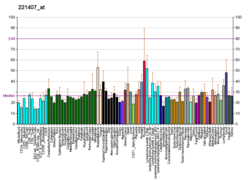
Gap junctions are specialized intercellular connections between a multitude of animal cell-types. They directly connect the cytoplasm of two cells, which allows various molecules, ions and electrical impulses to directly pass through a regulated gate between cells.

Connexins (Cx), or gap junction proteins, are structurally related transmembrane proteins that assemble to form vertebrate gap junctions. An entirely different family of proteins, the innexins, form gap junctions in invertebrates. Each gap junction is composed of two hemichannels, or connexons, which consist of homo- or heterohexameric arrays of connexins, and the connexon in one plasma membrane docks end-to-end with a connexon in the membrane of a closely opposed cell. The hemichannel is made of six connexin subunits, each of which consist of four transmembrane segments. Gap junctions are essential for many physiological processes, such as the coordinated depolarization of cardiac muscle, proper embryonic development, and the conducted response in microvasculature. For this reason, mutations in connexin-encoding genes can lead to functional and developmental abnormalities.

Gap junction alpha-1 protein (GJA1), also known as connexin 43 (Cx43), is a protein that in humans is encoded by the GJA1 gene on chromosome 6. As a connexin, GJA1 is a component of gap junctions, which allow for gap junction intercellular communication (GJIC) between cells to regulate cell death, proliferation, and differentiation. As a result of its function, GJA1 is implicated in many biological processes, including muscle contraction, embryonic development, inflammation, and spermatogenesis, as well as diseases, including oculodentodigital dysplasia (ODDD), heart malformations, and cancers.

Gap junction beta-2 protein (GJB2), also known as connexin 26 (Cx26) — is a protein that in humans is encoded by the GJB2 gene.

Gap junction beta-1 protein (GJB1), also known as connexin 32 (Cx32) is a transmembrane protein that in humans is encoded by the GJB1 gene. Gap junction beta-1 protein is a member of the gap junction connexin family of proteins that regulates and controls the transfer of communication signals across cell membranes, primarily in the liver and peripheral nervous system.

Gap junction alpha-5 protein (GJA5), also known as connexin 40 (Cx40) — is a protein that in humans is encoded by the GJA5 gene.

Gap junction beta-6 protein (GJB6), also known as connexin 30 (Cx30) — is a protein that in humans is encoded by the GJB6 gene. Connexin 30 (Cx30) is one of several gap junction proteins expressed in the inner ear. Mutations in gap junction genes have been found to lead to both syndromic and nonsyndromic deafness. Mutations in this gene are associated with Clouston syndrome.

Gap junction beta-3 protein (GJB3), also known as connexin 31 (Cx31) — is a protein that in humans is encoded by the GJB3 gene.

Gap junction alpha-4 protein, also known as Connexin-37 or Cx37, is a protein that in humans is encoded by the GJA4 gene. This protein, like other Connexin proteins, forms connections between cells known as gap junctions. Connexin 37 can be found in many tissues including the ovary, heart, and kidney.

Gap junction alpha-3 protein is a protein that in humans is encoded by the GJA3 gene.

Gap junction gamma-1 protein (GJC1), also known as gap junction alpha-7 protein (GJA7) and connexin 45 (Cx45) — is a protein that in humans is encoded by the GJC1 gene.

Gap junction alpha-8 protein is a protein that in humans is encoded by the GJA8 gene. It is also known as connexin 50.

EF-hand domain-containing protein 1 is a protein that in humans is encoded by the EFHC1 gene.

Gap junction beta-4 protein (GJB4), also known as connexin 30.3 (Cx30.3) — is a protein that in humans is encoded by the GJB4 gene.

Gap junction delta-4 protein (GJD4), also known as connexin-40.1 (Cx40.1), is a protein that in humans is encoded by the GJD4 gene.

Gap junction delta-2 (GJD2), also known as connexin-36 (Cx36) or gap junction alpha-9 (GJA9), is a protein that in humans is encoded by the GJD2 gene.

Gap junction gamma-2 (GJC2), also known as connexin-46.6 (Cx46.6) and connexin-47 (Cx47) and gap junction alpha-12 (GJA12), is a protein that in humans is encoded by the GJC2 gene.

Gap junction beta-7 protein (GJB7), also known as connexin-25 (Cx25), is a protein that in humans is encoded by the GJB7 gene.

Gap junction beta-5 protein (GJB5), also known as connexin-31.1 (Cx31.1), is a protein that in humans is encoded by the GJB5 gene.

Gap junction alpha-10 protein, also known as connexin-62 (Cx62), is a protein that in humans is encoded by the GJA10 gene.














